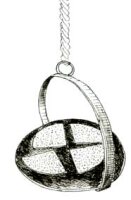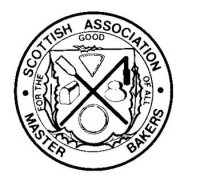 |
[ZAWiW] [gemeinsamlernen] [LiLL] | ||
|
|
||
A Scottish perspective
Stand:
Cooking was over an open fire, either on a flat round sheet of iron called a girdle, or in a deeper pot. Each had a hooped handle which was suspended from a hook over the heat. The grain would be mixed to different consistencies with water and some salt; the thinner porridge was cooked in the pot, and the coarser meal was shaped into a flat round cake or bannock and baked on the griddle, turned once using a bannock spade. It was also taken to the fields uncooked to save time during harvest, for instance. The diet was supplemented by milk, butter, and cream and of course fish, mainly herring.
With improvements in agriculture wheat was grown in the fertile lands of the Northeast and the Lowlands but oatmeal remained the staple of ordinary people. Ovens were introduced and bakers began to make bread for sale. By the 12th Century towns were being granted Burgh status which carried with it trading privileges. The different crafts formed Guilds to protect their interests and many of these still exist today, though mainly in an honorary capacity, dispensing funds to good causes.

The Incorporation of Baxters (Bakers) of Glasgow is typical of such organisations in Scottish towns. It was formed in the mid-sixteenth century to control the baking and selling of bread and the training of apprentices, who served seven years. The discipline was strict. They were not allowed to marry and they had to obey a curfew and observe the Sabbath, as well as being ordered to wear hats at funerals. They joined their Guild in the Processions on Feast Days and took part in the early Morality Plays presented on these occasions. Entry to the Guild was sternly controlled, and was either by the "Near Hand", that is husbands or sons of members' daughters, or by the "Far Hand" if unconnected, subject to the approval of members.
Heavy fines were imposed for any breach of the rules such as selling underweight loaves, and at one time an extra loaf was baked with every twelve to avoid this, giving rise to the expression "Baker's Dozen" meaning thirteen. Latterly, and right up to the present, the traditional Scottish loaf was batch baked. The loaves are individually shaped in a tin, turned out and pressed together for baking, giving each a hard top and base and soft sides. It is called a plain loaf, as distinct from a pan loaf which is baked in the tin and has a crust all round.

